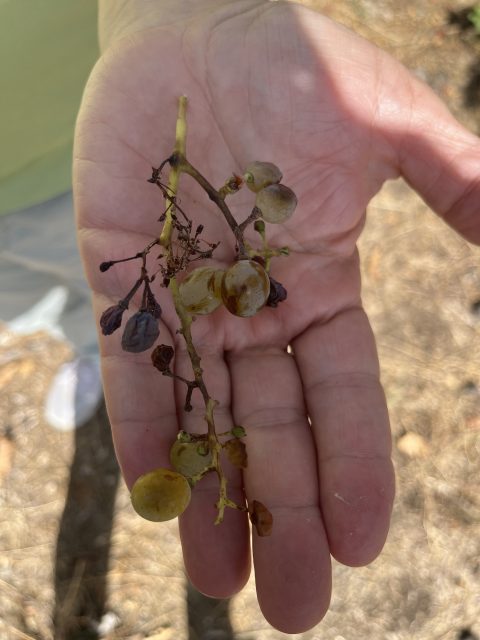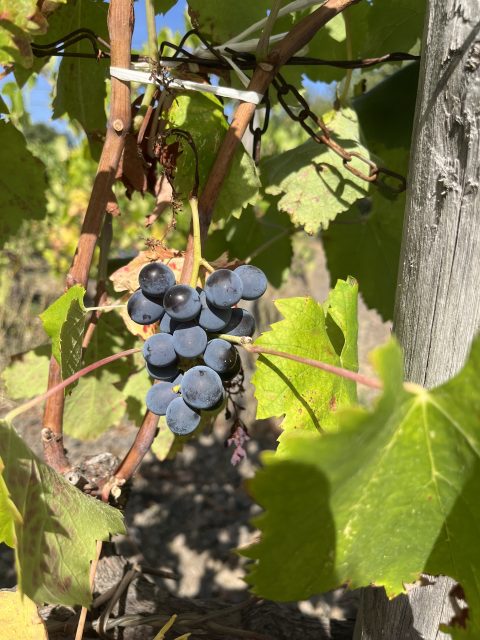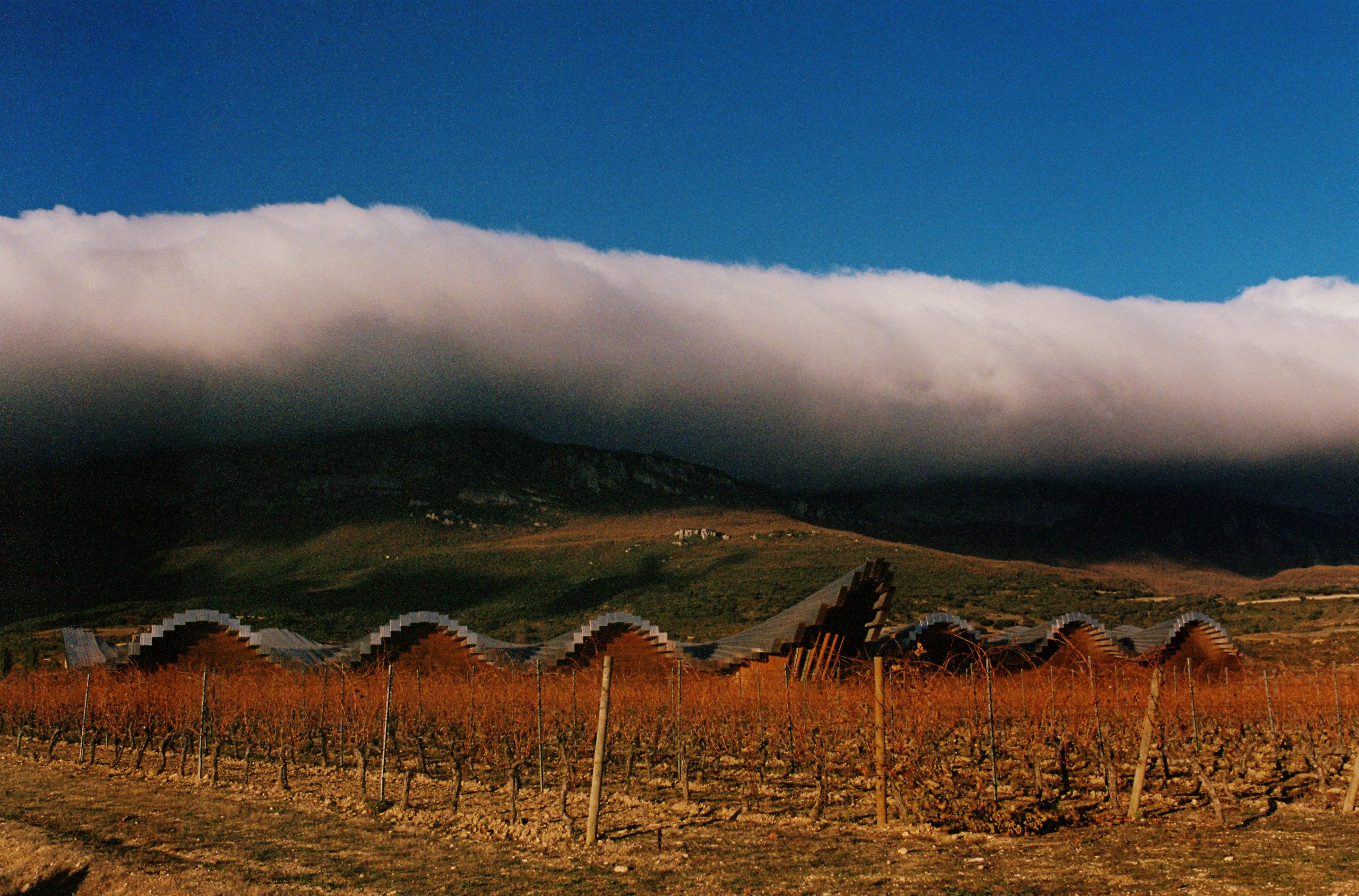Etna harvest declared ‘a tragedy’ as disease decimates volumes
“It is a tragedy,” said one producer speaking to db last week in Etna, where some vignaioli have lost almost their entire harvest due to an attack of downy mildew following humid conditions early on in the growing season.

During a discussion with Giordano Lorefice, who is the owner of Etna’s Tenute dei Ciclopi, it became quickly apparent that this year’s vintage has been one of the most challenging on record for producers who tend vines on the northern side of the volcano in Sicily.
Commenting on the quantity of grapes he expects to harvest next month, Lorefice – a part-time wine producer who heads up legal affairs for Cinecittà Studios – said that he expects his vines to yield just 10% of their usual production, ascribing the massive decrease in volume to Peronospora, a fungal disease better known as Downy mildew.
“We’ve never had Peronospora this bad in the last 10 years; it is a tragedy, we’ve lost 70-90% of the harvest” he told db, adding, “We are organic, and had no chance to kill it, we can only try to isolate it.”
Similarly, Mario Paoluzi from I Custodi, another producer who owns vineyards on Etna’s northern slopes, said that in some plots as much as 95% of this year’s production has been destroyed by the fungus, which thrives in warm, wet conditions.
“The cause of the problem was the rain in May and June,” he said, referring to a prolonged period of humidity during flowering and fruit set for the grapes, which grow at 700-1000m above sea level on the northern side of Mount Etna, Europe’s largest active volcano.
Like Tenute dei Ciclopi, I Custodi is certified organic, meaning that it cannot apply systemic fungicides to try to combat downy mildew attacks, but must rely on copper and sulphur, which once sprayed on the vine, are easily washed off should it rain again – as it did repeatedly at the start of this year’s growing season.
Another organic wine-producing property on Etna’s northern side, Primaterra, also suffered devastating losses to this year’s crop, with proprietor Tiziana Gandolfo telling db that she expects to harvest “no more than 10-15%” of the normal quantities, before commenting, “It is very sad to see no grapes”, when leading a handful of wine writers through her estate on Friday last week.
Remarking that this year “we will probably only make rosé”, she said that she had never seen such a devastating attack of downy mildew in Etna, but had been told that the last time the Peronospora was this destructive was 1952.
“It has been so bad because it arrived in June during the night, when no-one was here, and when it was recognised, it was too late,” she said, recalling damp, misty night-time conditions in late spring as the cause of the severity of the attack this year.
She added, “When the Peronospora attacks the flower, you can’t do anything, and that’s why you see only half a bunch [of grapes], because the flowers were damaged.”
In contrast, Gandolfo said that running an organic vineyard on the northern slopes of Etna, despite the relatively high rainfall totals of around 1,000mm annually, was normally a disease-free operation.
“We have very little need for treatment here, because we get rain, but there’s plenty of wind too, so the vine dries quickly,” she told db.

Interestingly, I Custodi’s Paoluzi said that the losses at his estate were least bad among vineyards trained in Etna’s traditional approach, called albarello, and worst in those where there was a Guyot training system.
Having recorded crop losses of 95% in the latter system, he said that in those vineyards using albarello training, the yields were down by 40%, suggesting that ancient techniques produced more disease-reliant vines.
Meanwhile, Tenute dei Ciclopi’s Lorefice stressed that the few grapes that have survived the spring-time downy mildew attack should be high-quality, when picked in mid-October.
“I’m optimistic about the quality this year, because there has been no loss in quality for those grapes not killed by the Peronospora,” he said.
Continuing, he commented, “The weather during the last few weeks has been fantastic for the vineyards, and the weather is good now, although it all depends on the next two weeks.”
Not all the grape growers on Etna’s northern slopes suffered such devastation due to downy mildrew, however, with Enzo Cottanera from the Cottanera estate on the north side of the volcano recording the fortunate position he finds himself in.
“This year we have been lucky, and have only lost 10% of the crop compared to last year,” he said.
Partner Content
“We have only been affected a little bit by Peronospora,” he added, noting, “While others have had a lot of damage.”
Meanwhile, for those on the eastern side of the mountain, the vintage is looking good in quantity and quality.
“We didn’t have Peronospora on this side of Etna,” said Marco Iuppa, from the Iuppa estate in the commune of Milo on the eastern slopes of the volcano, who later admitted that the disease had affected just 5% of his crop.
Explaining the reason for the difference, Paoluzi told db, “The eastern side did not suffer the same losses due to Peronospora because there are more slopes, there is better air circulation, and the maturation is later [than the northern side of the volcano].”
More generally speaking, Lorefice said that he believed that the damage from downy mildew was more severe in Etna than anywhere else in Sicily, or indeed Italy.
“The Peronospora spread so fast; Etna was the worst affected,” he said, suggesting that it was a result of the high-altitude of the vineyards, which receive more rainfall.
As a result of the much smaller impending harvest this year, Lorefice forecast a sharp rise in grape prices, particularly white grapes from Etna, which are seeing increased demand due to a jump in sales of Etna Bianco DOC.
“The prices are crazy,” he said. “This year, the price of [native white grape] Carricante is higher than [local red variety] Nerello Mascalese,” he added.
Continuing, he recorded, “If the cost per kilo of Carricante is usually around €2, and some years it achieves €3, this year people are talking about €6, because there is so little.”
Meanwhile, Nerello Mascalese is expected to fetch €3 per kilo, when it usually attracts a sum of €2-2.5, according to Lorefice.
Finally, when db asked Primaterra’s Gandolfo if there would be any financial support from the Italian government to compensate for the huge destruction in this year’s crop, she said that “there might be some financial support, but it won’t be enough, as it might cover the cost of the lost grapes, but we produce and sell wine.”
Wildfires have been a further threat for producers on Etna this year. Maria Grazia, who is the owner of La Contea on the eastern side of the mountain, said that her neighbour lost all their vines in July this year, but “saved their house”, when fires swept through the area.
Her own 5 hectares of vineyards were spared any lasting damage by spraying them with water taken from a lake on the property, which is used to store water for irrigating fruit trees on the estate.
Looking back, Marco Iuppa said that on 25 July as many as 366 fires were recorded in and around Etna, including one in the woodland alongside the Iuppa estate, which he said, was prevented from spreading to the vines using water from a well on the property.
“It was the hottest and windiest day, and it’s thought that a group of arsonists were waiting for such conditions – the fires were organised to do as much damage as possible,” he said.
With the fires causing power outages, Marco told db that when the flames reached Iuppa, “We had no electricity, and no firefighters; we were on our own.”
As previously reported by db, the damage caused by downy mildew in southern Italy in particular is expected to cause overall Italian wine production to drop by around 12% this year to “just below” 44 million hectolitres. This will mean that the country loses its position as Europe’s biggest producer to France, which takes top spot with a predicted 44-47m hl harvest.
Read more
Italy drops below France for wine production as climate change blamed
Related news
Alcohol-free Prosecco drives success for sparkling wine giant




